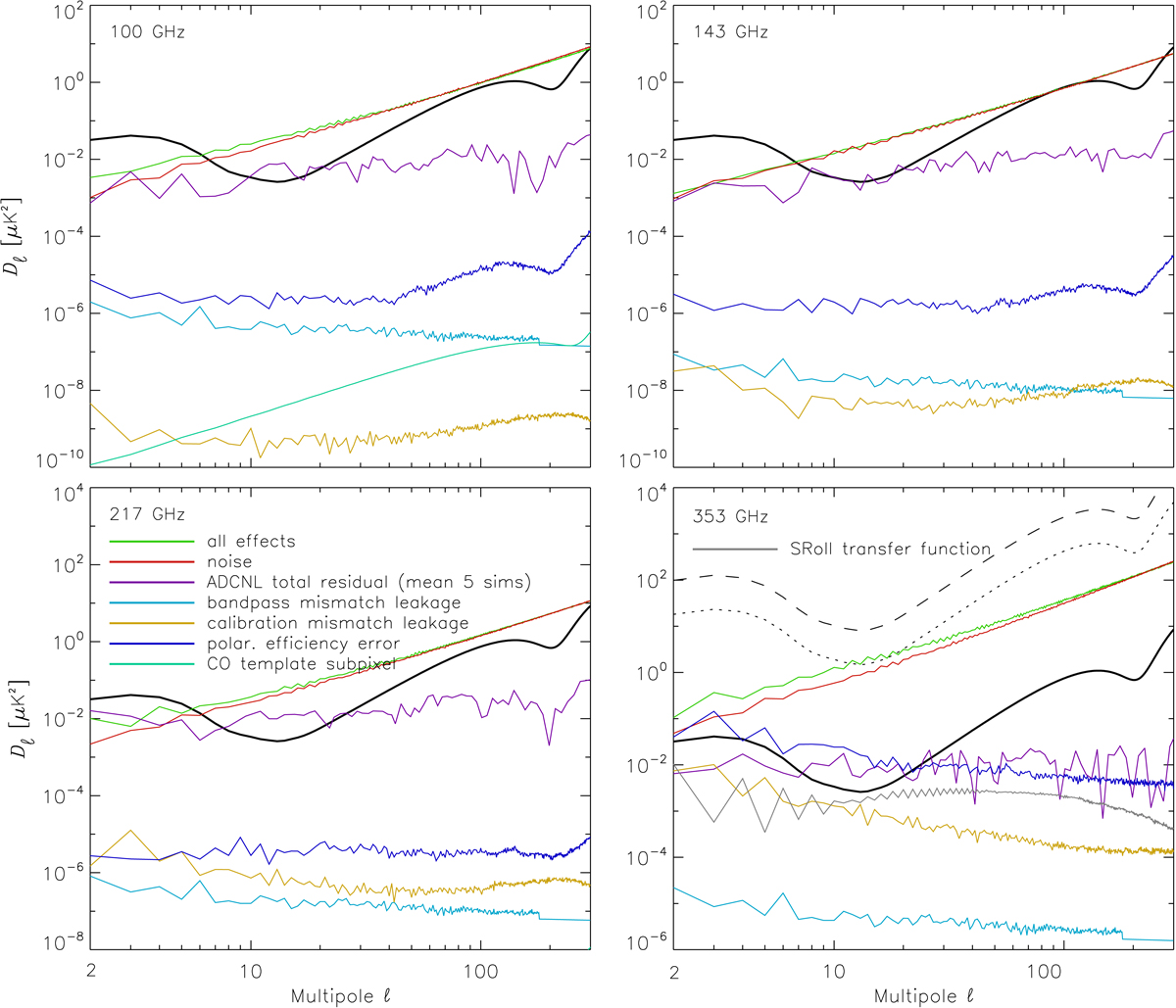Fig. 24.

Polarization power spectra in ![]() , showing the noise (red) and the main systematic residuals: ADCNL remaining after cleaning (purple), polarization efficiency (dark blue), bandpass-mismatch leakage (light blue), leakage from calibration mismatch (orange), and the sum of all these (green). SRoll2 residual empirical transfer function (gray), and CO template subpixel effect (turquoise) have not been included in the sum. The fiducial CMB power spectrum is shown as a black lines. At 353 GHz, the systematic residuals are dominated by the polarization efficiency knowledge that has been fitted at the noise level for the lowest multipoles. At other frequencies, ADCNL is still the instrumental systematic effect that has the highest residuals.
, showing the noise (red) and the main systematic residuals: ADCNL remaining after cleaning (purple), polarization efficiency (dark blue), bandpass-mismatch leakage (light blue), leakage from calibration mismatch (orange), and the sum of all these (green). SRoll2 residual empirical transfer function (gray), and CO template subpixel effect (turquoise) have not been included in the sum. The fiducial CMB power spectrum is shown as a black lines. At 353 GHz, the systematic residuals are dominated by the polarization efficiency knowledge that has been fitted at the noise level for the lowest multipoles. At other frequencies, ADCNL is still the instrumental systematic effect that has the highest residuals.
Current usage metrics show cumulative count of Article Views (full-text article views including HTML views, PDF and ePub downloads, according to the available data) and Abstracts Views on Vision4Press platform.
Data correspond to usage on the plateform after 2015. The current usage metrics is available 48-96 hours after online publication and is updated daily on week days.
Initial download of the metrics may take a while.


